Gardening in the shade can feel like a delightful secret, waiting eagerly for those who dare to embrace its unique charm. For both beginners and seasoned green thumbs, shaded areas offer a canvas of possibilities that can transform overlooked corners into lush, serene retreats. While sunlight often steals the spotlight in garden discussions, the gentle embrace of shade presents opportunities for a different kind of beauty—a beauty that thrives in soft, dappled light.
Understanding which plants naturally flourish in shaded environments is key to crafting a thriving garden where sunlight is scarce. In this article, we’ll explore a selection of stunning plants that not only tolerate but genuinely flourish in the shade, adding layers of texture and color to your garden. Whether you’re looking to fill a shady nook or create a cool, calming oasis, these plants will inspire you to see shade in a new light.
Readers will discover practical tips on selecting the right plants for various levels of shade, ensuring that each choice contributes to a harmonious garden design. We’ll dive into the specific needs of these shade-loving gems, equipping you with the knowledge to nurture them with confidence and success. Prepare to be enchanted by the vibrant possibilities that await in the shadows, ready to transform your garden into a tranquil haven.
Understanding Shade-Tolerant Plant Needs
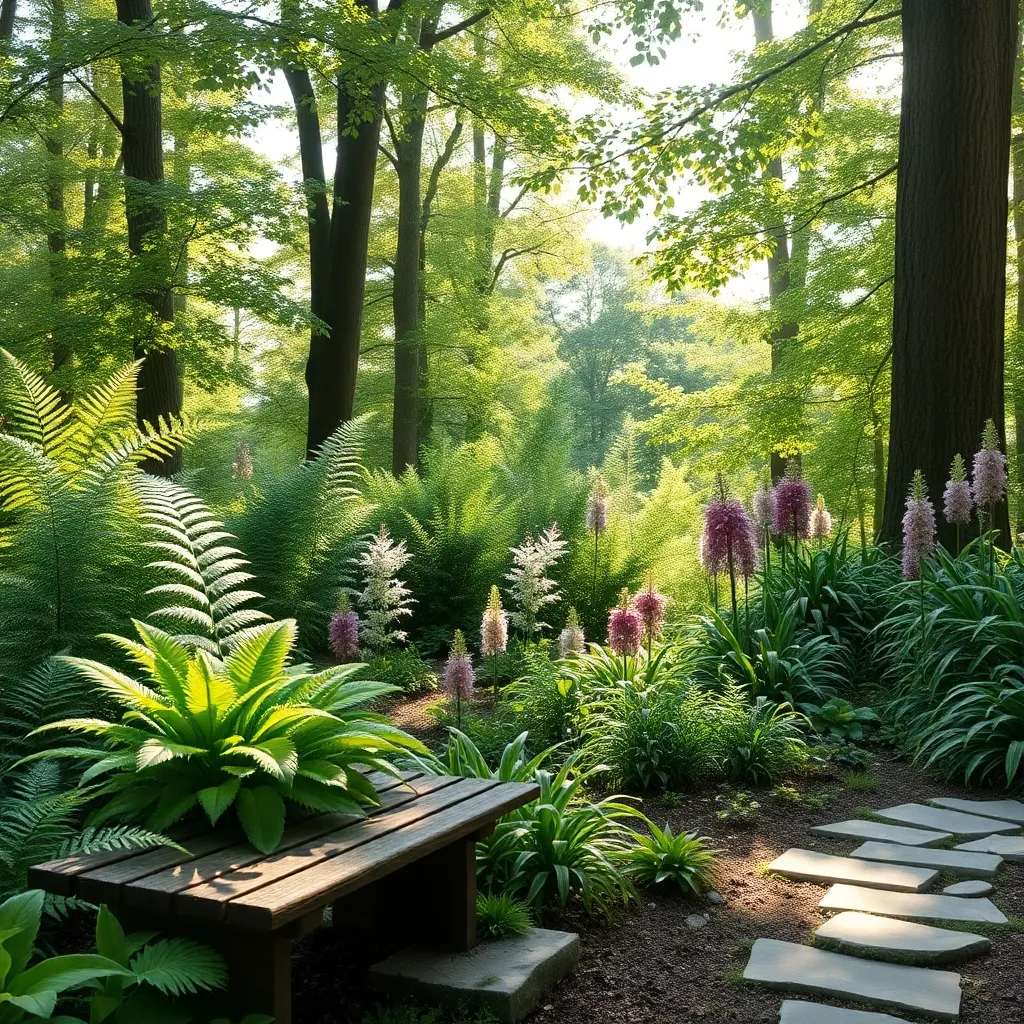
When selecting shade-tolerant plants, it’s crucial to understand that they still require some amount of light to thrive. Most shade plants prefer dappled or indirect sunlight, so finding the right location in your garden is essential.
Soil quality plays a significant role in the success of shade-loving plants. Ensure that the soil is rich in organic matter and well-draining, as many shade plants do not tolerate waterlogged conditions well.
Watering practices for shade plants differ from those in sunnier spots. While they generally require less frequent watering, it’s important to maintain consistent moisture in the soil, particularly during dry spells.
Fertilization should be approached with care, as shade plants often grow slower and have lower nutrient needs. A light application of a balanced, slow-release fertilizer in the spring can support their growth without overwhelming them.
Advanced gardeners can experiment with layering different shade-tolerant plants to create depth and texture in shaded areas. Consider combining plants with varying heights and foliage colors to enhance visual interest while meeting each plant’s specific light and soil requirements.
Top Perennials for Shady Spots
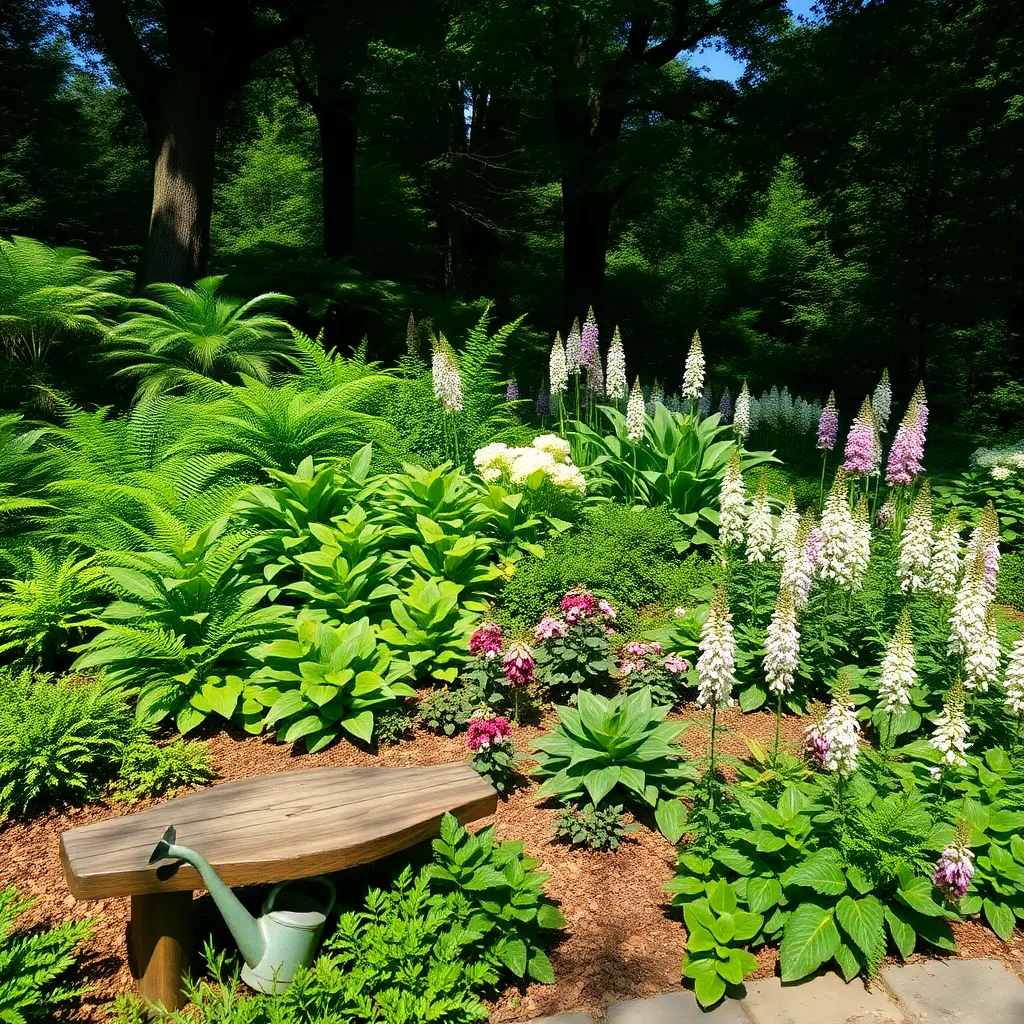
When choosing perennials for shady spots, consider the beautiful and versatile Hosta. These shade-loving plants thrive in well-drained, rich soils and require watering once a week to maintain their lush foliage.
The delicate Astilbe is another excellent choice for adding color and texture to shaded areas. Plant them in moist, humus-rich soil and make sure they receive consistent moisture, especially during dry spells.
For a pop of color, Bleeding Heart offers gorgeous, heart-shaped flowers that brighten any shaded garden. They prefer soil that is rich in organic matter, and it’s crucial to keep the soil evenly moist but not waterlogged.
Experienced gardeners can also try Heuchera, known for its vibrant foliage and adaptability. Although it tolerates some sun, it performs best in partial to full shade with well-draining soil and moderate watering, avoiding soggy conditions.
To ensure success, gardeners should test their soil’s drainage before planting any of these perennials. Simply dig a hole about a foot deep, fill it with water, and observe how quickly it drains; if it takes longer than an hour, consider amending the soil with organic matter.
Colorful Foliage for Dim Corners
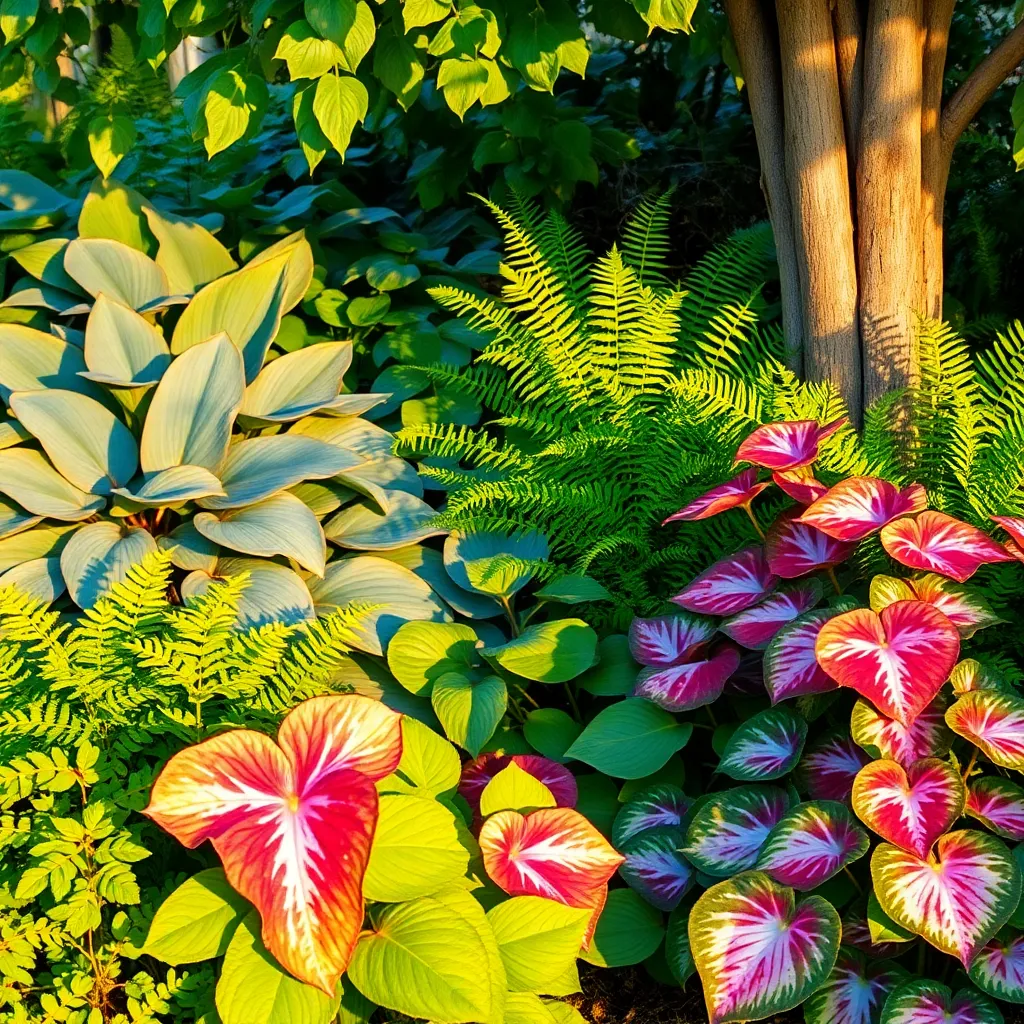
Transform those dim corners of your garden into vibrant displays with plants that boast colorful foliage. Consider planting the versatile Heuchera, also known as coral bells, which offers a variety of leaf colors ranging from deep purples to lime greens.
Heuchera thrives in well-drained, rich soil and prefers partial to full shade, making it ideal for low-light areas. Watering should be done regularly to keep the soil slightly moist, but avoid waterlogging, which can lead to root rot.
Another excellent choice for shaded spots is the eye-catching Japanese Painted Fern. Its striking silver and burgundy fronds add a touch of elegance and require minimal maintenance once established.
Japanese Painted Ferns prefer consistently moist soil, so ensure regular watering in dry spells, especially during the first growing season. For optimal growth, incorporate a layer of organic mulch to retain moisture and suppress weeds.
Blooming Beauties in Low Light
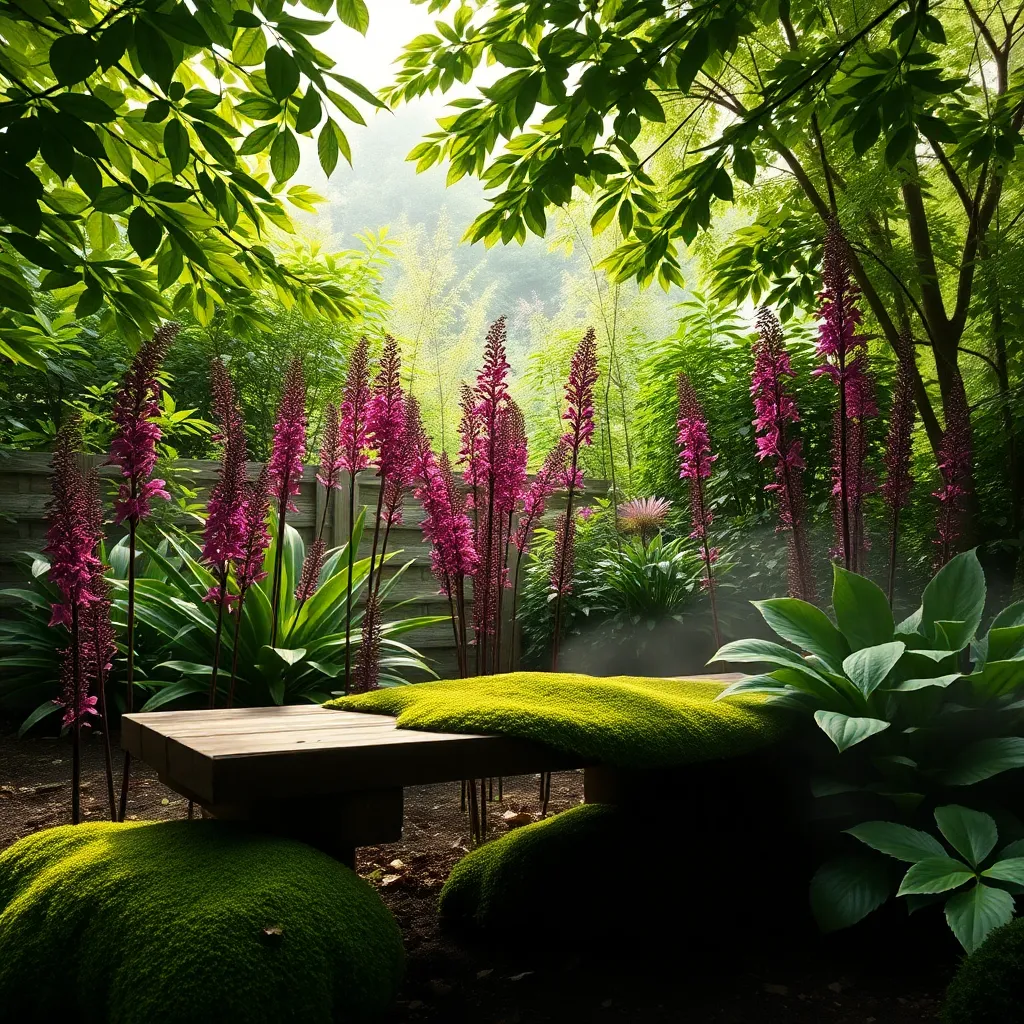
For those with shaded gardens, choosing the right blooms can be transformative. Astilbes are a fantastic choice, thriving in low-light areas and providing feathery plumes of pink, red, or white flowers. They prefer a consistently moist, well-draining soil, so adding organic compost can be beneficial to maintain moisture.
Another excellent option is the Hellebore, also known as the Lenten Rose, which offers winter and early spring blooms. These perennials require minimal maintenance and are deer-resistant, making them ideal for shaded woodland gardens. Plant them in rich, well-draining soil, and ensure they are watered regularly during dry spells to promote healthy growth.
Consider incorporating Bleeding Hearts for a romantic touch with their heart-shaped flowers. These plants flourish in partial to full shade and prefer slightly acidic soil with good drainage. Regular watering is essential, particularly during their active growth phase in spring, but be careful to avoid waterlogging the soil.
For gardeners looking to add fragrance to shaded areas, Sarcococca, or sweet box, is a remarkable choice. This evergreen shrub produces small but highly fragrant flowers in late winter to early spring. It thrives in humus-rich, well-drained soil and benefits from a layer of mulch to retain soil moisture and suppress weeds.
Maintaining and Caring for Shade Plants
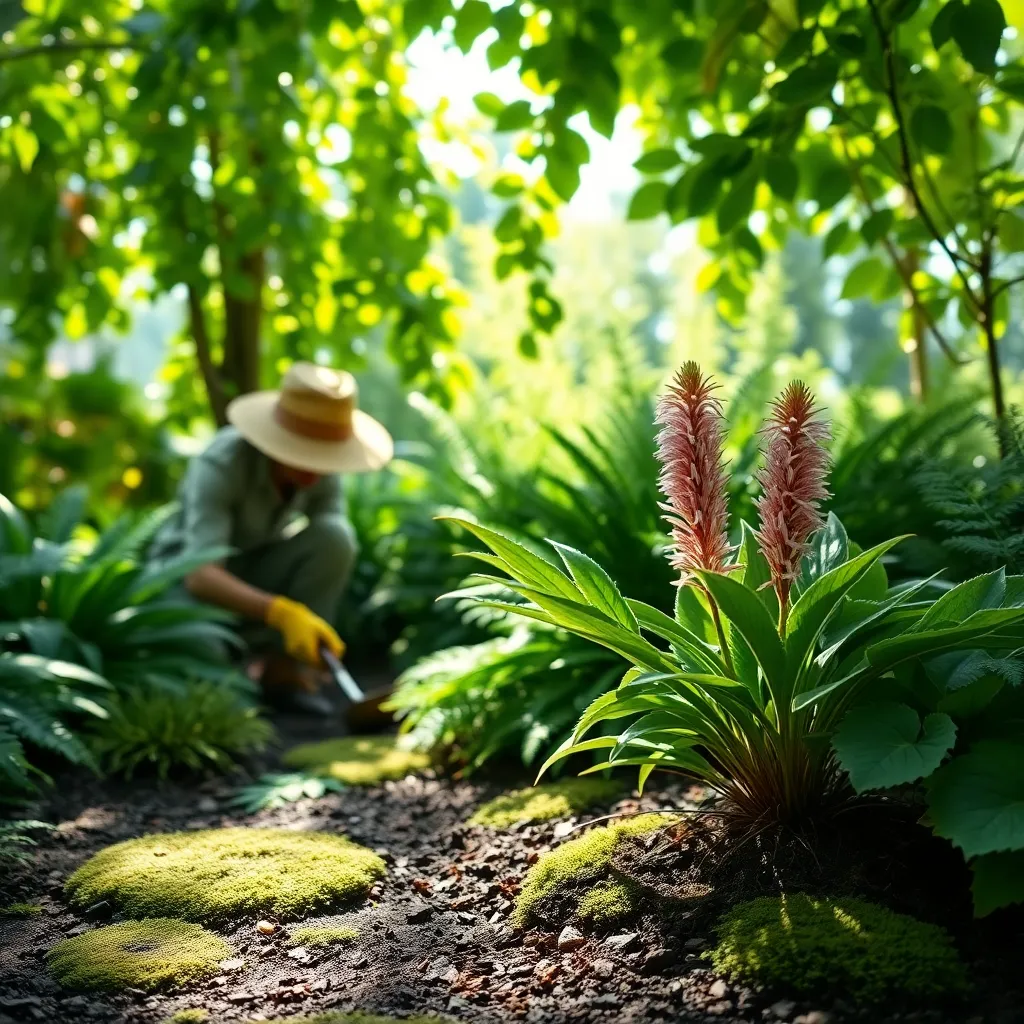
When caring for shade plants, it’s essential to understand their unique needs. Unlike sun-loving varieties, these plants thrive in low-light environments, making them perfect for areas with limited sunlight.
Begin with assessing the soil conditions where your shade plants are located. Ideally, the soil should be well-draining and rich in organic matter to support healthy root development.
Watering is another crucial aspect of maintaining shade plants. Generally, these plants require less frequent watering compared to those in full sun, but it’s important to ensure the soil remains consistently moist, especially during dry spells.
Mulching is an effective technique for maintaining moisture levels and suppressing weeds around your shade plants. Use organic mulch like shredded bark or leaf mold, which also enhances soil fertility over time.
For those looking to take their shade gardening to the next level, consider incorporating a few advanced techniques. Regularly check for signs of pests or diseases, as shade plants can sometimes be more susceptible to fungal infections due to the damp conditions.
Fertilization should be done sparingly, as over-fertilizing can harm shade plants. Apply a balanced, slow-release fertilizer in early spring to promote steady growth without overwhelming the plants.
Finally, remember that each shade plant has its own set of specific needs. Research the particular requirements of your plants to ensure you’re providing the best care possible, allowing them to flourish beautifully even in the shadiest corners of your garden.
Conclusion: Growing Success with These Plants
In exploring the captivating world of shaded plants, we’ve uncovered five key relationship concepts that can transform your green and personal spaces: understanding compatibility, nurturing growth through patience, valuing diversity, creating supportive environments, and recognizing resilience. Just as these stunning plants thrive in the shadows, relationships flourish when partners appreciate each other’s unique needs and strengths.
As your immediate next step, choose a shaded plant that resonates with you and your partner, and plant it together. This simple act symbolizes your commitment to nurturing growth in every aspect of your relationship.
Bookmark this article to revisit these insights whenever you need a reminder of how to cultivate strong and enduring bonds. By saving this guide, you ensure that these timeless principles remain easily accessible, empowering you to continuously enhance your relationship.
Looking forward, remember that every relationship has the potential to thrive, much like these remarkable plants. With understanding and dedication, your partnership can flourish in any environment, enriching your life with lasting beauty and strength. Embrace the journey and watch your relationship grow.
